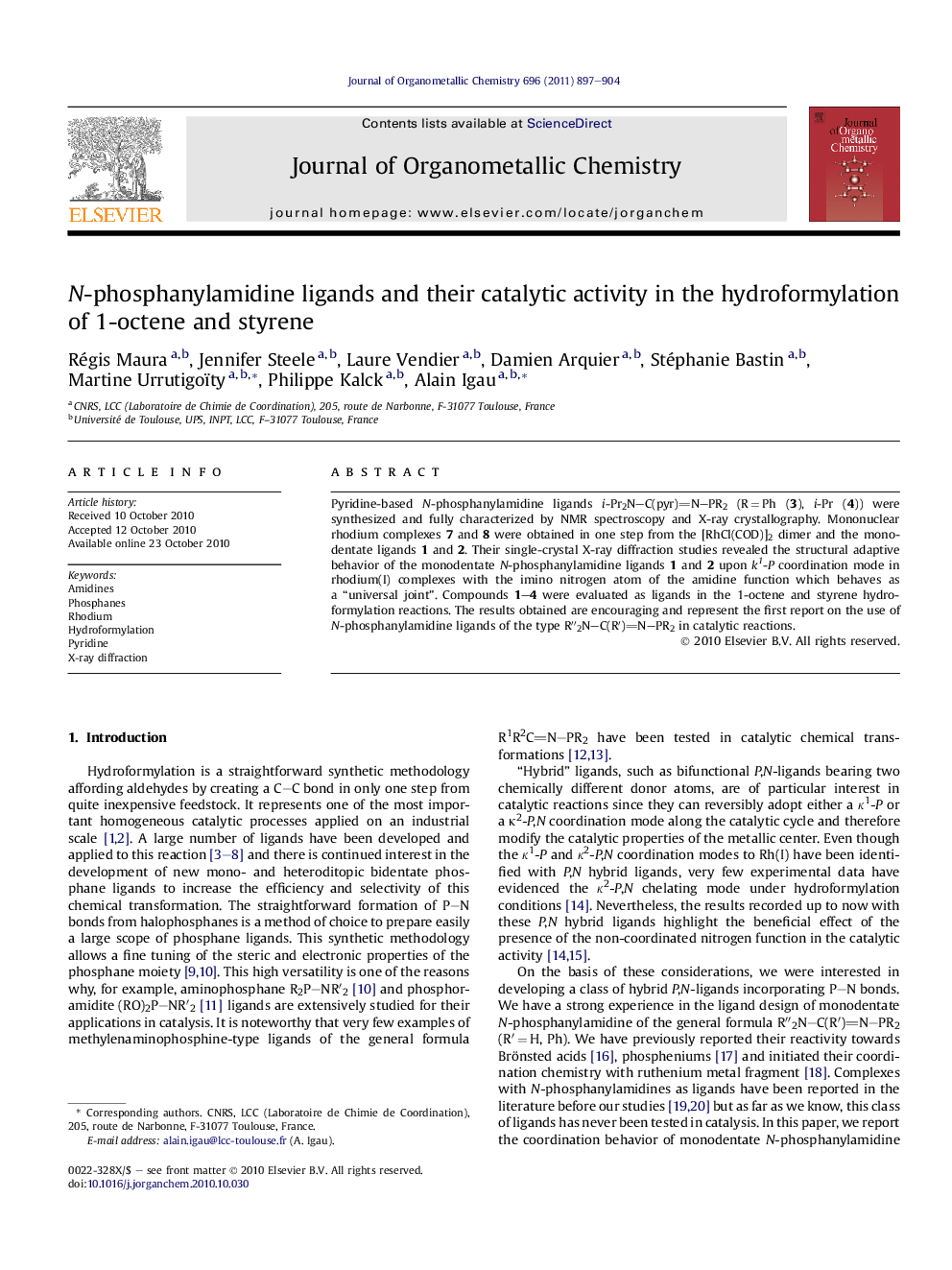| Article ID | Journal | Published Year | Pages | File Type |
|---|---|---|---|---|
| 1324769 | Journal of Organometallic Chemistry | 2011 | 8 Pages |
Pyridine-based N-phosphanylamidine ligands i-Pr2N–C(pyr)N–PR2 (R = Ph (3), i-Pr (4)) were synthesized and fully characterized by NMR spectroscopy and X-ray crystallography. Mononuclear rhodium complexes 7 and 8 were obtained in one step from the [RhCl(COD)]2 dimer and the monodentate ligands 1 and 2. Their single-crystal X-ray diffraction studies revealed the structural adaptive behavior of the monodentate N-phosphanylamidine ligands 1 and 2 upon k1-P coordination mode in rhodium(I) complexes with the imino nitrogen atom of the amidine function which behaves as a “universal joint”. Compounds 1–4 were evaluated as ligands in the 1-octene and styrene hydroformylation reactions. The results obtained are encouraging and represent the first report on the use of N-phosphanylamidine ligands of the type R″2N–C(R′)N–PR2 in catalytic reactions.
Graphical abstractX-ray diffraction studies revealed the structural adaptive behavior of the N-phosphanylamidine ligands upon κ1-P coordination mode in rhodium(I) complexes. The catalytic properties of rhodium complexes containing N-phosphanylamidine ligands in 1-octene and styrene hydroformylation have been examined.Figure optionsDownload full-size imageDownload as PowerPoint slideResearch highlights► Preparation of pyridine-based N-phosphanylamidine ligands i-Pr2N–C(pyr)=N–PR2. ► Structural adaptive behavior of N-phosphanylamidines upon κ1-P coordination mode. ► First report on the use of R″2N–C(R′)=N–PR2 ligand type in catalytic reactions. ► High regioselectivity in the catalytic hydroformylation reaction of 1-styrene.
